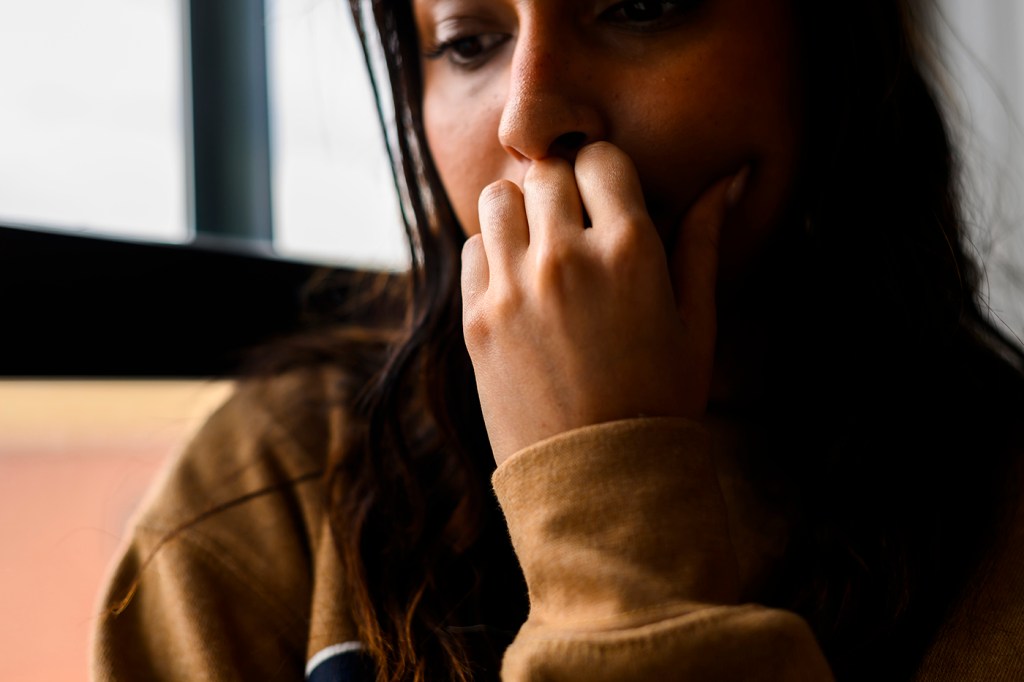Depression in teen girls is on the rise, CDC says. It’s a wakeup call and an opportunity, according to experts

The record levels of sadness, hopelessness and sexual violence reported by teen girls to the Centers for Disease Control and Prevention are not just an indictment of society.
They are a wakeup call that represents an opportunity for schools and communities to get more involved in promoting teen wellbeing, says Margo Lindauer, Northeastern University School of Law associate clinical professor.
That means not only providing mental health services and domestic violence prevention education, but offering enhanced arts, music and theater programs that enhance the quality of life, she says.
“Whenever the data is so dire, there’s an opportunity,” says Lindauer, a Northeastern expert in domestic violence.
“It’s imperative we use this data to compel some really good, wrap-around, holistic and culturally appropriate services for young women,” she says.

The CDC report released Monday says that teen girls and teens who identify as LGBTQ+ “are experiencing extremely high levels of mental distress, violence and substance abuse.”
Trend data from the CDC’s Youth Risk Behavior Survey—the first collected since the start of the COVID-19 pandemic—shows that one in five teen girls had experienced sexual violence in the past year, a 20% increase since 2017.
Just as ominously, more than one in 10 teen girls reported ever being forced to have sex, which the CDC says was a 27% increase since 2019 and the first increase since the federal health agency began monitoring this measure.
Majority of teen girls feel sad and hopeless
When the data was collected in 2021, three in five girls felt persistently sad and hopeless and more than one in four said they had seriously considered suicide—in both cases, a leap of 60% from data collected in 2011.
“High school should be a time for trailblazing, not trauma,” CDC Chief Medical Officer Dr. Debra Houry said in a CDC press release.
“Obviously the data isn’t good. It shows how in need of support young girls are,” Lindauer says.
One positive note is that the teens felt free to report on their feelings of distress and sadness, something they might have felt compelled to gloss over in the past, Lindauer says.
“There’s a lot less stigma about talking about mental health,” she says.
LGBTQ+ teens also reported harrowing rates of distress.
In 2021, more than one in 10 LGBTQ+ students “did not go to school because of safety concerns; nearly one in four experienced sexual violence and nearly one in four were bullied at school,” the CDC report says.
Nearly half of LGBTQ+ students “seriously considered attempting suicide, nearly one in four attempted suicide and nearly three in four reported persistent feelings of sadness or hopelessness,” the CDC says.
The data collection took place in the fall of 2021 after schools returned to in-class learning following the outbreak of the COVID-19 pandemic in early 2020.
The role of isolation and social media
Many students at that time were still suffering the effects of social isolation and were struggling to catch up on schoolwork after being remote learners for months, Lindauer says.
“There’s clearly a correlation between mental health and isolation and also social media,” she says, adding that viewing idealized and posed images on social media makes people feel inadequate.
Added to that, “There’s a level of competition and fear about the future” that previous generations didn’t face, she says.
“There’s a feeling you have to get into college and do well,” Lindauer says. Students worry, “Which college? Which major? Am I going to get a job? Am I going to get an internship?”
Schools need to ramp up and expand mental health services and health and domestic violence education programs that may have been curtailed during the earliest days of the pandemic, she says.
Make lessons about consent part of the curriculum
Lessons about consent and gender equality in relationships need to be part of the health curriculum, Lindauer says, adding that too many young people are getting their information from social media and pornography.
“I think we need to have conversations around consent, intimacy and pleasure much younger. Also, it should not be a conversation, rather ongoing dialogues,” she says.
The CDC report says it’s important that schools increase students’ sense “that they are cared for, supported and belong at school,” an approach called “school connectedness.”
Offering students access to meditation or yoga could help relieve symptoms of stress and foster a sense of connectedness, Lindauer says.
So would restoring arts, music and theater programs that were on the chopping block even before the COVID-19 pandemic hit, she says.
It can be done—California voters in November approved a ballot initiative requiring a minimal level of funding of arts and music in K-12 public schools after years of cuts.
Arts, music and theater programs offer opportunities for students to have fun, build friendships and feel that they are good at something outside their regular academic work, Lindauer says.
“We need to expand our understanding of mental and physical wellness to help our young people identify strategies, activities and passions that alleviate the stress and trauma of living during this time period,” she says.
“We need to be honest about the dangers of being sexually active while also acknowledging that young people experiment and that experimentation is natural and should be done with the most information possible.”
Cynthia McCormick Hibbert is a Northeastern Global News reporter. Email her at c.hibbert@northeastern.edu or contact her on Twitter @HibbertCynthia






